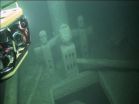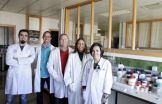(Press-News.org) Fairfax, Va., March 5, 2014— The American Society for Radiation Oncology (ASTRO) has issued a new white paper, "A review of safety, quality management, and practice guidelines for high-dose-rate brachytherapy," that recommends specific guidance to follow in the delivery of high-dose-rate (HDR) brachytherapy to improve quality and patient safety, according to the manuscript published in the March-April 2014 print issue of Practical Radiation Oncology (PRO), the official clinical practice journal of ASTRO. The executive summary and supplemental material are also available as open-access articles online at http://www.practicalradonc.org.
Commissioned by ASTRO's Board of Directors as part of the Target Safely campaign, the white paper evaluates the current safety and practice guidance for HDR brachytherapy, makes recommendations for guidance applications to the delivery of HDR brachytherapy, suggests topics where additional guidance is needed and examines the adequacy of general physics, quality assurance (QA) and clinical guidance currently available for the most common treatment sites with regard to patient safety. The manuscript also addresses HDR brachytherapy procedures, the use of checklists and forms, the multidisciplinary treatment team, challenges to maintaining safe use of HDR brachytherapy and key measures for avoiding catastrophic failure.
To ensure correct actions are followed for a specific brachytherapy procedure, the white paper recommends the use of a quality management program, including checklists and forms to maintain quality and prevent errors. ASTRO's white paper references the American Association of Physicists in Medicine (AAPM) Task Group (TG) 59 report that includes examples of forms for quality control and checklists for the various stages of treatment, which can be customized by the treatment team. The AAPM TG-100 report that includes the tools and process for creating an effective quality management program is also cited.
Due to the multidisciplinary nature of HDR brachytherapy treatment, the modality requires coordination among several clinicians to treat the patient accurately and safely. The white paper details the roles and qualifications of those directly involved with radiation therapy decisions: the radiation oncologist, medical physicist, medical dosimetrist, radiation therapist and surgeon. The roles and qualifications are based on ASTRO's Safety is No Accident: A Framework for Quality Radiation Oncology and Care, a comprehensive book detailing minimum recommended guidelines for radiation oncology practices, and the AAPM TG 59 report specific to HDR brachytherapy.
The white paper addresses 12 anticipated challenges to maintaining quality in HDR brachytherapy because of the constant changes in the modality. Anticipated challenges include the replacement of the traditional radiation therapy simulator with a computed tomographic simulator, which requires significant changes in how HDR brachytherapy procedures are performed; the use of new procedures and methods, which can lead to mistakes due to inadequate training, QA or inappropriate procedures; the proliferation of devices, applicators and radionuclides used for brachytherapy treatment, which leads to an increased number of possible processes, types of equipment and clinical uses, making it increasingly difficult to determine how to assure that all of the variations are used with appropriate process control and quality management; and the potential for increased use of model-based algorithms such as Monte Carlo methods for dose calculations for brachytherapy sources, which will require new procedures for commissioning, new algorithm QA and new patient-specific planning checks. The full list of anticipated challenges is available in the supplemental material.
The manuscript makes seven recommendations for improved safety and quality in HDR brachytherapy. The white paper recommends that practitioners follow relevant guidance documents and that deviation from consensus recommendations should be supported by clinical studies or pursued in the setting of a clinical trial approved by an institutional review board; that practitioners receive training in a new procedure before beginning its practice, that the training should include a practical, "hands-on" component and that all team members directly involved with the radiation therapy decisions should participate in at least five proctored cases before performing similar procedures independently; and that professional societies should accelerate the generation of new or updated guidance documents for the following disease sites and techniques: skin, central nervous system, gastrointestinal, lung or endobronchial and esophagus, and, while outside the charge of this panel, assess the need for updated guidance documents for accelerated partial breast irradiation using electronic brachytherapy. The complete list of recommendations is available in the supplemental material.
The white paper describes six benchmarks to provide facilities with measures to evaluate compliance with the seven recommendations in the manuscript. The six benchmarks are: 1) HDR brachytherapy procedures are supported with the appropriate team as described in the report of the AAPM TG 59 and the American College of Radiology HDR Brachytherapy Practice Standard; 2) commissioning of the treatment unit, treatment planning system and each new source is performed by a qualified medical physicist and verified through a QA process; 3) assay of the HDR brachytherapy unit source is performed using a well-type ionization chamber with a calibration traceable to the National Institute of Standards and Technology, and this assay is performed or confirmed for each source change. Planning system source strength parameters must be updated with each source change; 4) treatments are performed according to the guidelines from the American Brachytherapy Society when available for the treatment site; 5) treatment plans and programs are checked through independent verification before treatment delivery; and 6) daily QA checks of the HDR brachytherapy system are performed before any treatment.
"As the technology and use of HDR brachytherapy advances, it is imperative that clinical, physics and quality assurance guidance be reviewed and updated, as necessary, to ensure quality and patient safety in the treatment delivery," said Bruce R. Thomadsen, PhD, a professor in the Department of Medical Physics at the University of Wisconsin School of Medicine and Public Health. "This white paper affirms that HDR brachytherapy is a safe treatment option when current process guidance is followed and appropriate clinical decisions are made based on clinical guidance provided in white papers such as this."
INFORMATION:
The full text (supplemental material) was approved by ASTRO's Board of Directors on September 21, 2013 and has been endorsed by the American Brachytherapy Society, AAPM, the American Association of Medical Dosimetrists and the American Society of Radiologic Technologists. The American College of Radiology's Commission on Radiation Oncology has reviewed and accepted the white paper. This white paper is related to other published reports in the ASTRO white paper series on patient safety, including those on image guided radiation therapy (IGRT), the peer review process, intensity modulated radiation therapy (IMRT) and stereotactic body radiation therapy (SBRT).
The paper's authors are Bruce R. Thomadsen, PhD, Beth A. Erickson, MD, FASTRO, Patricia J. Eifel, MD, FASTRO, I-Chow Hsu, MD, Rakesh R. Patel, MD, Daniel G. Petereit, MD, FASTRO, Benedick A. Fraass, PhD, FASTRO, and Mark J. Rivard, PhD.
For the complete text and supplemental material, contact Brittany Ashcroft at 703-839-7336, press@astro.org. For more information about PRO, visit http://www.practicalradonc.org.
ABOUT ASTRO
ASTRO is the premier radiation oncology society in the world, with more than 10,000 members who are physicians, nurses, biologists, physicists, radiation therapists, dosimetrists and other health care professionals that specialize in treating patients with radiation therapies. As the leading organization in radiation oncology, the Society is dedicated to improving patient care through professional education and training, support for clinical practice and health policy standards, advancement of science and research, and advocacy. ASTRO publishes two medical journals, International Journal of Radiation Oncology • Biology • Physics and Practical Radiation Oncology; developed and maintains an extensive patient website, http://www.rtanswers.org; and created the Radiation Oncology Institute, a non-profit foundation to support research and education efforts around the world that enhance and confirm the critical role of radiation therapy in improving cancer treatment. To learn more about ASTRO, visit http://www.astro.org. END
ASTRO white paper provides guidance for optimal quality, safety of HDR brachytherapy
2014-03-05
ELSE PRESS RELEASES FROM THIS DATE:
New molecules doom proteins with kiss of death
2014-03-05
ITHACA, N.Y. – Like mobsters following strict orders, newly engineered molecules called "ubiquibodies" can mark specific proteins inside a cell for destruction – a molecular kiss of death that is paving the way for new drug therapies and powerful research tools.
Led by professor Matthew DeLisa, chemical engineers at Cornell University have developed a new type of antibody, called a "ubiquibody," which is an antibody fragment they have inserted into the natural process known as the ubiquitin-proteasome pathway (UPP). Their work appears in the March 16 issue of the Journal ...
Some metallic toys and low-cost jewelry present health risks for young children
2014-03-05
This news release is available in French.
We know that babies and young children often put non-food items in their mouths, a behaviour that occasionally leads to swallowing of foreign objects. Metallic toys and low-cost jewelry often contain toxic substances such as lead and cadmium. Do these objects present a health risk for young children?
To answer this question, Gérald J. Zagury, a professor in the Department of Civil, Geological and Mining Engineering at Polytechnique Montréal, and Mert Guney, a former doctoral student under Professor Zagury's supervision, ...
Half of pregnant women are passive smokers, due above all to their partners
2014-03-05
As shown in a study carried out by researchers at 13 research centres in Asturias, Gipuzkoa, Sabadell and Valencia, over half of non-smoking pregnant women, 55%, are passive smokers. These women are under the effect of tobacco smoke to a considerable extent because a member of the household, their partner in particular, smokes at home. The result of the study has been published in the journal Science of the Total Environment.
Within the INMA project that studies childhood and the environment, research has been carried out into the extent to which non-smoking pregnant ...
Sulphur haunts the ghost wreck
2014-03-05
Scientists from the same team have previously reported large amounts of sulphur and iron accumulation in the warship Vasa. In that study, the scientists found an outbreak of acidity and sulphate salts on the surface of the hull and other wooden objects.
'This is the result of biological and chemical processes that occur naturally in low-oxygen waters and in sediments,' says Yvonne Fors from the Department of Conservation at the University of Gothenburg and one of the scientists behind the article.
However, even if sulphur and iron accumulation is commonly occurring ...
Plumes in the sleeping avian brain
2014-03-05
This news release is available in German.
When we drift into deep slow-wave sleep (SWS), waves of neuronal activity wash across our neocortex. Birds also engage in SWS, but they lack this particular brain structure. Researchers from the Max Planck Institute for Ornithology in Seewiesen, Germany together with colleagues from the Netherlands and Australia have gained deeper insight into the sleeping avian brain. They found complex 3D plumes of brain activity propagating through the brain that clearly differed from the two-dimensional activity found in mammals. These ...
New technique allows frequent water quality monitoring for suite of pollutants
2014-03-05
Researchers from North Carolina State University have developed a new technique that uses existing technology to allow researchers and natural resource managers to collect significantly more information on water quality to better inform policy decisions.
"Right now, incomplete or infrequent water quality data can give people an inaccurate picture of what's happening – and making decisions based on inaccurate data can be risky," says Dr. François Birgand, an assistant professor of biological and agricultural engineering at NC State and co-author of a paper describing the ...
Copied from nature: Detecting software errors via genetic algorithms
2014-03-05
This news release is available in German.
According to a current study from the University of Cambridge, software developers are spending about the half of their time on detecting errors and resolving them. Projected onto the global software industry, according to the study, this would amount to a bill of about 312 billion US dollars every year. "Of course, automated testing is cheaper", explains Andreas Zeller, professor of Software Engineering at Saarland University, as you could run a program a thousand times without incurring any charges. "But where do these ...
New findings on neurogenesis in the spinal cord
2014-03-05
Research from Karolinska Institutet in Sweden suggests that the expression of the so called MYC gene is important and necessary for neurogenesis in the spinal cord. The findings are being published in the journal EMBO Reports.
The MYC gene encodes the protein with the same name, and has an important role in many cellular processes such as proliferation, metabolism, cell death and the potential of differentiation from immature stem cell s to different types of specialized cells . Importantly it is also one of the most frequently activated genes in human cancer.
Previously ...
Barbie could dampen a young girl's career dreams
2014-03-05
Although the marketing slogan suggests that Barbie can "Be Anything," girls who play with this extremely popular doll see fewer career options available to themselves compared to boys. So say Aurora Sherman of Oregon State University and Eileen Zurbriggen of the University of California, Santa Cruz, who conducted one of the first experiments on how playing with fashion dolls influences girls' perceptions about their future occupational options. The findings, which the psychologists describe as "sobering," are published in Springer's journal Sex Roles.
Sherman and Zurbriggen ...
Technique patented that opens the door to the development of new drugs against osteoporosis
2014-03-05
This news release is available in Spanish.
Scientists from the University of Granada (UGR) have opened the door to the development of new drugs against osteoporosis, one of the most common chronic illnesses in the world, especially among women 65 or over.
The researchers, from the University of Granada's Department of Physio-Chemistry, have patented a new methodology that allows specialists to measure – none-invasively and in real time – the concentration of phosphate ions inside living cells. The scientific importance of measuring phosphate ions is based precisely ...







